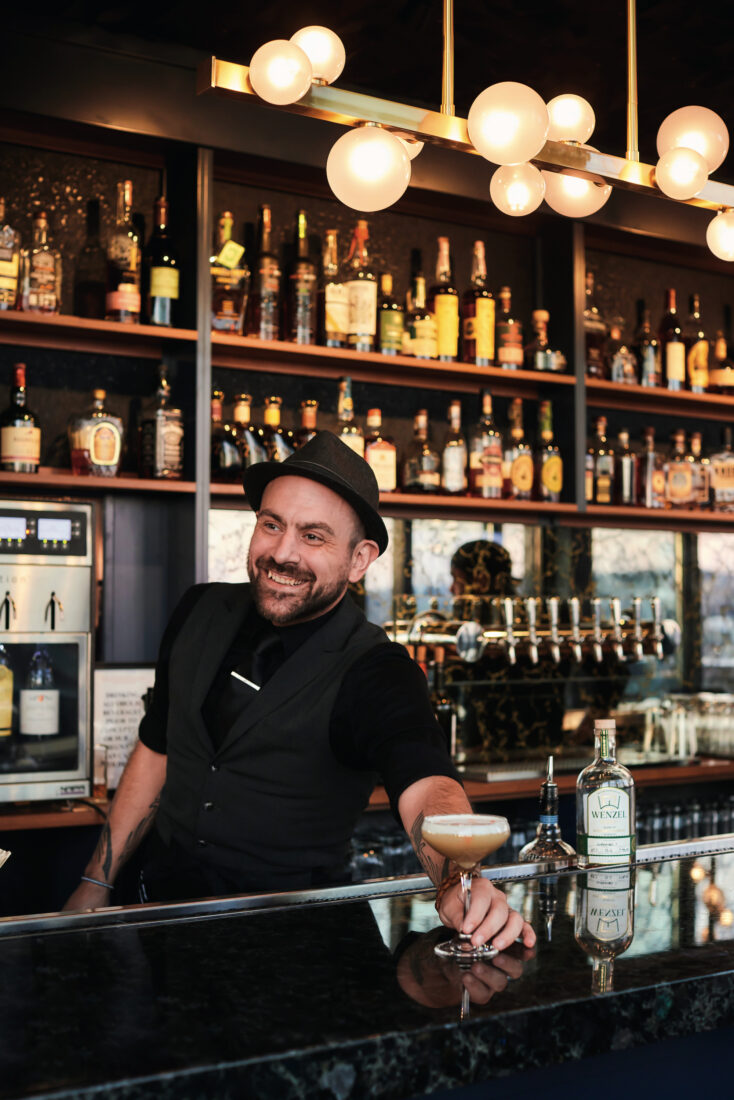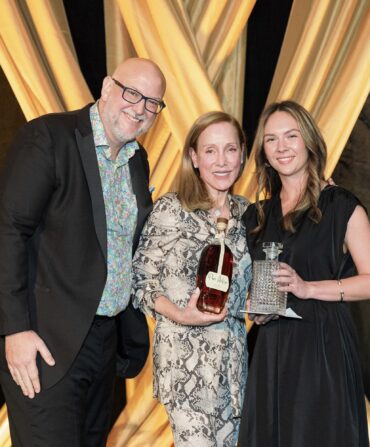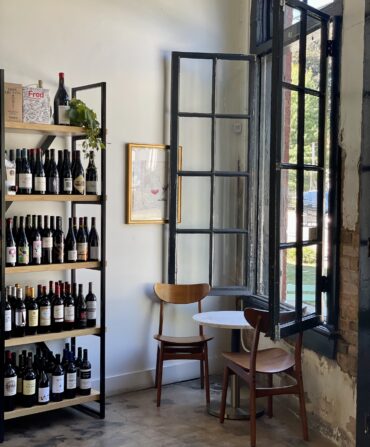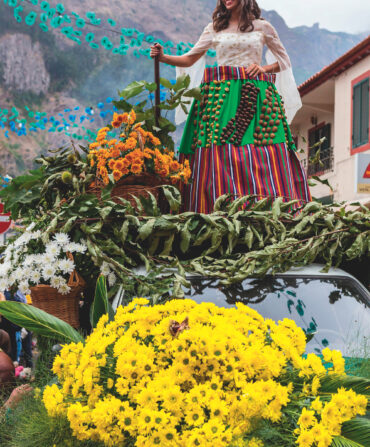The parking lot of the Party Source, a massive liquor store in Newport, Kentucky, might seem an unlikely location for an award-winning craft distillery. But as my friend Will Hinkle and I pull into the lot, New Riff Distilling’s gleaming copper still, ensconced in a sleek glass tower, commands attention. We learn during our early afternoon tour that a hundred-foot-deep well taps into a limestone-filtered aquifer beneath the distillery, which helps explain why Party Source’s former owner Ken Lewis decided to build it right here in a corner of the lot. Naturally stripped of iron and sulfides, the mineral-rich well water is ideal for cooking ground grains to ferment and distill into bourbon. Flowing from the earth at a constant fifty-eight degrees, it’s also circulated throughout the distillery as an energy-efficient means of cooling hot liquids.

Founded in 2014 as the ongoing bourbon boom was still gaining traction, New Riff takes an innovation-within-tradition approach to its whiskey. We taste that in a pour of Bohemian Wheat, an eight-year-old bourbon made with malted, unmalted, and dark wheat in addition to the requisite corn. It’s an anomaly, yet its honeyed sweetness and bready undertones captivate with nuanced simplicity. It’s also indicative of the diversity of modern approaches Will and I aim to uncover over the next three days as we explore bourbon country from Northern Kentucky through the heart of the state.
“Distilleries today are primarily concerned with consistency, but it’s the inconsistencies of the past that make these bourbons so interesting”
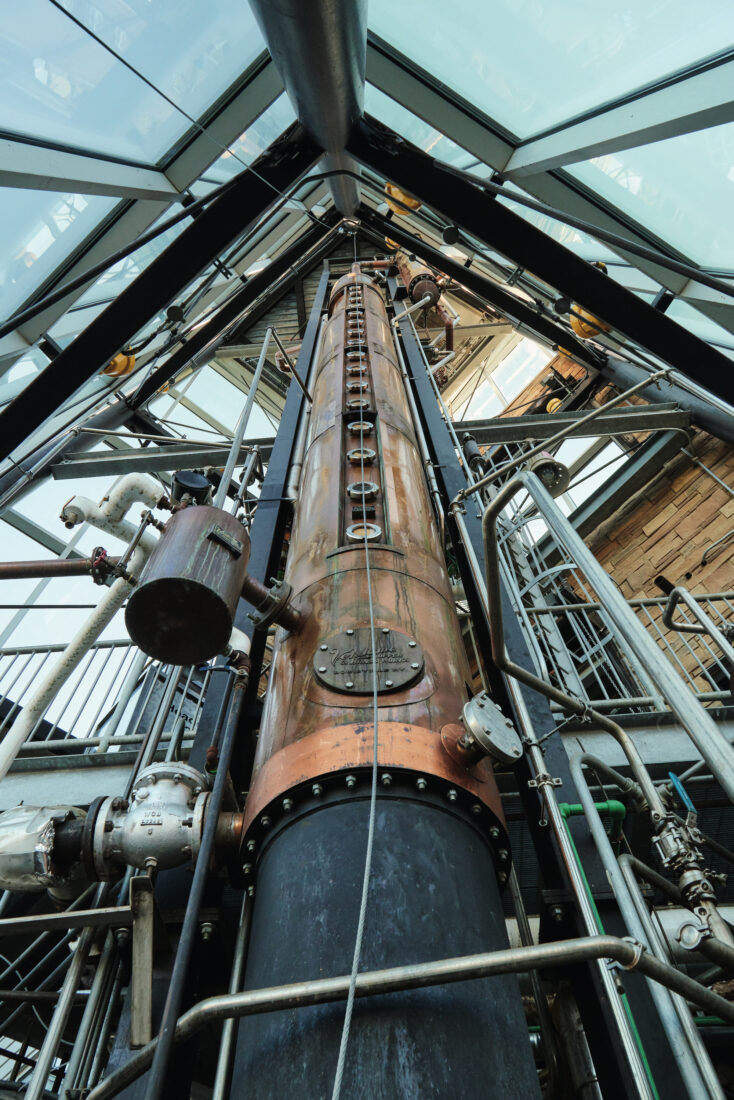
Driving up Monmouth Street to Pensive Distilling Co. + Kitchen, opened in 2021, we notice blocks of new-looking restaurants, bars, and boutiques interspersed with empty storefronts that stand out like missing teeth. After lunch at the microdistillery and restaurant (try the Strike the Gold burger, dressed with house-made bourbon barbecue sauce), we visit its second-floor speakeasy, where we learn that during Prohibition, Newport was a haven for bootleggers, gangsters, and general lawlessness. More recently, it stood as a largely blighted suburb of Cincinnati. But these days, Newport and neighboring Covington are undergoing their own bourbon-fueled booms. Will and I check in at Hotel Covington, which completed a $26 million expansion last spring, transforming a former YMCA building next door into luxe all-suite accommodations.
After a quick refresh, we walk a block to Revival Vintage Bottle Shop. Kentucky’s legislature passed a law that went into effect in 2018 allowing licensed retailers to buy and sell vintage spirits—anything that’s no longer in production today. Co-owned by Shannon Smith and Brad “Dusty” Bonds, Revival keeps at least a hundred bottles available for tasting behind the shop’s copper-topped bar, and its single-room retail space is stocked floor to ceiling. Will and I select half-ounce tasters of an I.W. Harper distilled in the 1970s ($15) and a private-label bourbon made for the Watergate Hotel in 1968 ($10), and we splurge on a 1977 Rebel Yell and a 1941 Old Timbrook (both $40). Each pour drips with personality, the flavors ranging from rich butterscotch to the woody musk of an old rickhouse. “Distilleries today are primarily concerned with consistency,” Bonds says, “but it’s the inconsistencies of the past that make these so interesting.”
Our table at the recently opened Opal Rooftop Restaurant & Bar overlooks the Ohio River and Cincinnati skyline. Over Redux cocktails (a Manhattan riff made with rye, sweet vermouth, pistachio liqueur, and a barspoon of torched maple syrup) and a dinner of wood-fired steak and dry-aged duck breast, Will and I talk about how early Kentucky distillers like Jacob Spears, an ancestor of Will’s, relied on the river to float flatboats laden with barrels downstream to drinkers in New Orleans and ports beyond. We’re both relatively sober, so with the car already parked for the evening, we enjoy a Sazerac made with a New Riff barrel pick at Hotel Covington’s hip cocktail bar before turning in.
If New Riff represents a modernist approach to bourbon, then Neeley Family Distillery, forty-five miles south in Sparta, is a proud continuation of its (often illicit) past. As we wait in the rustic visitor center for a late-morning tour, Will and I examine a detailed family tree, newspaper clippings, and a display of rifles and homemade stills that trace the family’s eleven generations of moonshiners and bootleggers, and at least one fatal family feud. Royce Neeley and his father, Roy, took the family business legit in 2015, and today the distillery uses traditional pot stills to make a variety of bourbons, rye whiskey, and ’shine from old family recipes, producing around two barrels a day. I particularly enjoy a single-barrel bourbon accurately dubbed “caramel apple” during a post-tour tasting, so I fill and label a bottle to take home.
Roughly following the Kentucky River south, we meander through small towns and stretches of rolling countryside on our drive to Millville for lunch at the Stave. Over old-fashioneds and smoked bologna sandwiches topped with chowchow, we reminisce that not long ago, a traditional tour at Woodford Reserve (just down the road), Four Roses, or a handful of other distilleries was pretty much the extent of the official Kentucky Bourbon Trail when it was founded in 1999. Today it includes forty-six distilleries across the state and various ways to experience them.
Castle & Key, our next stop, is a prime example. E. H. Taylor Jr. built the original facility in 1887 as the Old Taylor Distillery, envisioning a destination known as much for the beauty of its grounds as its bourbon. It shut down during Prohibition, like dozens of others in the state, and lay in ruins when Castle & Key’s founders bought the property in 2014. The full tour begins by the keyhole-shaped peristyle and spring Taylor built, takes you through the clang and hiss of the stillhouse, past the crumbling foundation of Warehouse A (now planted with seasonal herbs and botanicals), and into the world’s longest rickhouse. But even visitors who haven’t booked a tour can walk the botanical trails, laid out by the Kentucky landscape designer Jon Carloftis, or sip a cocktail at the renovated Taylorton Station, where guests arriving by train once disembarked.
It’s just a short drive to Lexington’s Manchester hotel, which opened last summer in the city’s burgeoning Distillery District. A quick Uber ride takes us to Fresh Bourbon. One of Kentucky’s first Black-owned distilleries, it opened its downtown tasting room in 2022. Heavy velvet curtains draw back to reveal a brightly lit room with leather stools and a long cream-colored bar top with marbled accents and pops of gold. “We wanted to create a space inviting not only to men but also to women,” says Tia Edwards, Fresh Bourbon’s co-owner with her husband, Sean. The bourbon features a hefty addition of honey malt in its four-grain recipe, and the tasting explores its sweet and savory interplay by pairing sips with pecans, cinnamon cereal, and other nibbles before we choose from a variety of bitters to make a customized old-fashioned.
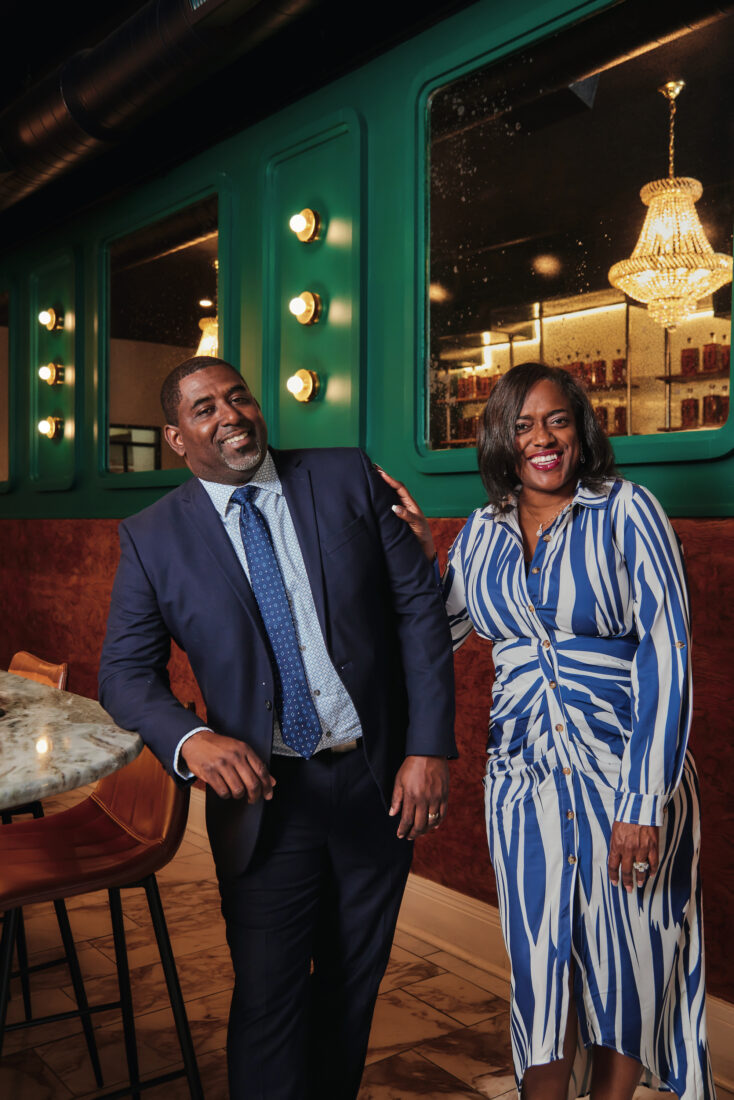
Constitution Rare & Antique Books—a dark, club-by speakeasy—makes for a stark but no less inviting contrast. Will and I enter through a door secreted in a bookcase and sit at a small bar tucked at the front of the cozy lounge. We chat with beverage director Rusty Wright as he methodically mixes a Smoking Gun, made with a split base of Rittenhouse rye and Mellow Corn whiskey with espresso liqueur and orange and cardamom bitters, and finished with a flaming spritz of expressed orange oil. Stirring another cocktail, Wright explains that he’s feeling for a chill on the side of the Yarai mixing glass and watching for the ice to drop slightly. “Cocktails are romantic, but making them can be intimidating,” he says. “We’re here to bring an educational component to the experience.”
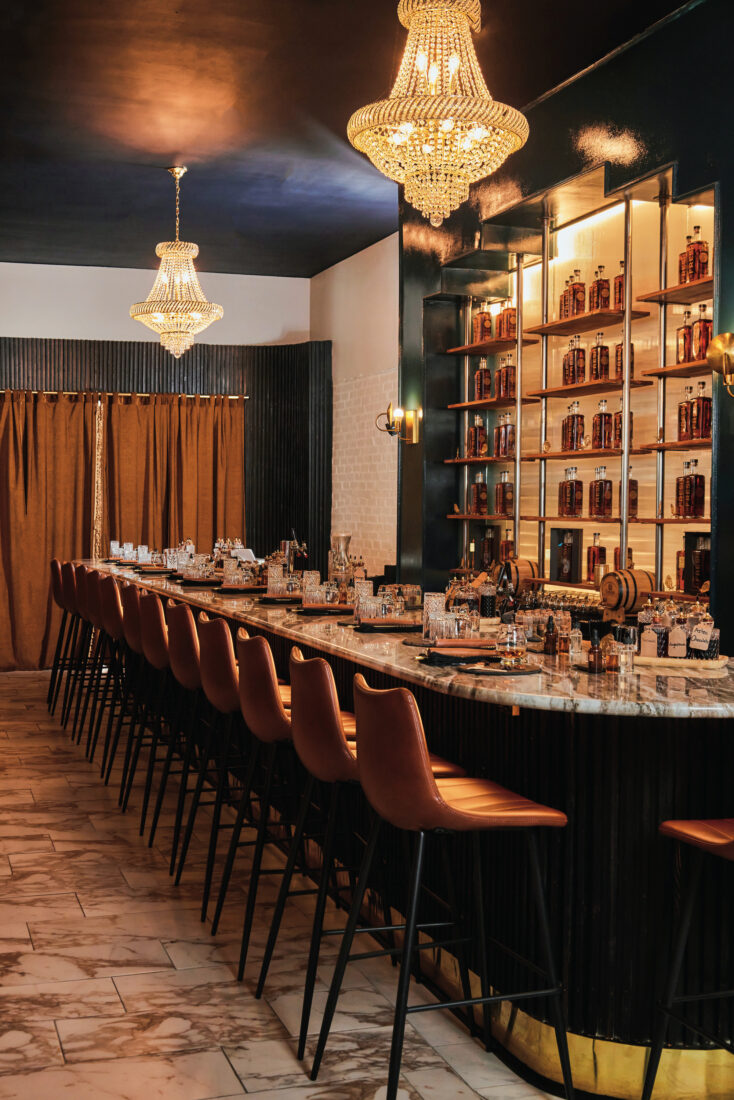
We can’t resist a stop at Lexington’s Jeff Ruby’s Steakhouse, with its red-velvet chairs, colossal chandeliers, and a Wildcat-blue piano perched in the middle of a massive U-shaped bar. As we sip barrel-aged Manhattans and devour large cuts of seared meat, it feels like a throwback to the bourbon-and-cigar lifestyle. But bourbon lovers today encompass a wide range of people and tastes.
I notice this the following day on a tour of Kentucky Cooperage in Lebanon, one of three such factories owned by Independent Stave Company, founded in 1912. Our group includes men and women of varying ages and backgrounds. We watch as workers shape seasoned staves of white oak into the new, charred barrels required for aging bourbon. As barrels emerge from the char tunnel, a cloud of smoke reminiscent of toasted marshmallows wafts over the group. “We don’t make the whiskey,” says tour guide Pat Daugherty, “but we do make the flavor.”
More than eleven million barrels of bourbon are currently resting in Kentucky alone, up some three million from a few years prior. As the bourbon industry continues to expand, ensuring a sustainable supply of white oak trees—which can take eighty years to reach maturity—is becoming ever more critical. We get a glimpse at efforts toward a more sustainable bourbon future at our last stop, nearby Maker’s Mark, on a new tour of its Star Hill Farm, which the distillery introduced last summer.
Founders Bill and Margie Samuels purchased the farm’s original acreage when they started the distillery in 1953, primarily to protect the water source used to make its bourbon and to stay close to the grains. Today the farm supports an interrelated ecosystem. Advocacy and experience manager Amanda Humphrey leads us through a garden with varietals like purple peas and alpine strawberries used in cocktails and dishes at the distillery’s restaurant. We pass a rock quarry where they’re growing mushrooms, and she points out clusters of bee boxes, explaining how pollinators and rotational grazing among the farm’s Wagyu cattle and sheep help to replenish the land. “You’re probably thinking to yourself, ‘What have mushroom quarries and bee boxes got to do with bourbon?’” she says. “I think the best way to describe it is that bourbon is an agricultural product. If we’re not good stewards of our land, we’re not going to be down here in two hundred years’ time making whiskey.”
We look toward a distant hillside planted with neat rows of white oak seedlings. Working with the University of Kentucky’s Department of Forestry and Natural Resources, the distillery collected more than four hundred varieties from across the tree’s range to plant the world’s largest white oak research forest. The goal is to study the trees’ growth, longevity, and resistance to drought and disease to improve the genetics of the species. We head down a short path to a majestic white oak known as the “mother tree,” estimated to be at least three hundred years old. Scientists used samples from this tree to map the white oak genome for the first time in 2021, and saplings from it are also now growing in the research forest. “We’ll all be long gone by the time this comes to fruition,” Humphrey says of the project. “It’s an investment in future generations, which I think is a beautiful thing.”
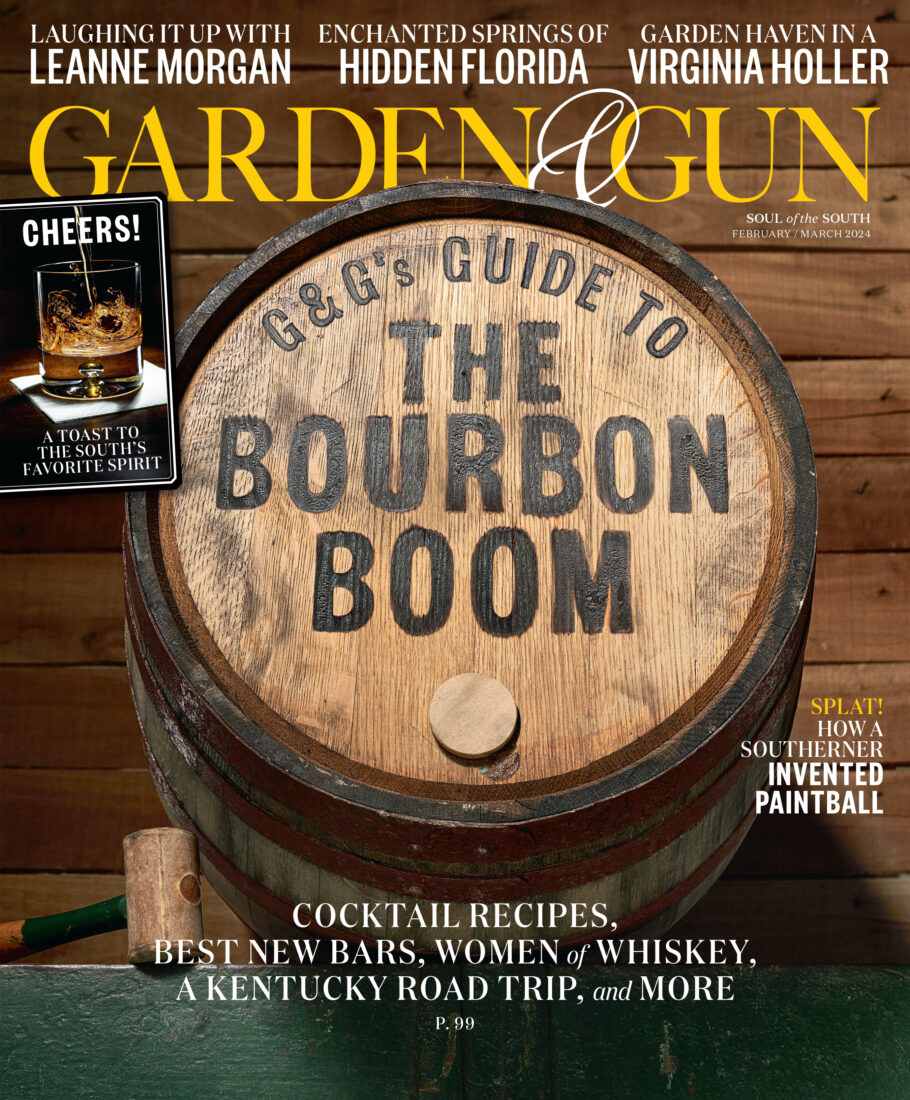
Thirsty for More?
See Nine of the South’s Best Whiskey Bars, Seven Women Brining Bourbon into the Future, and more at G&G’s Guide to the Bourbon Boom.


